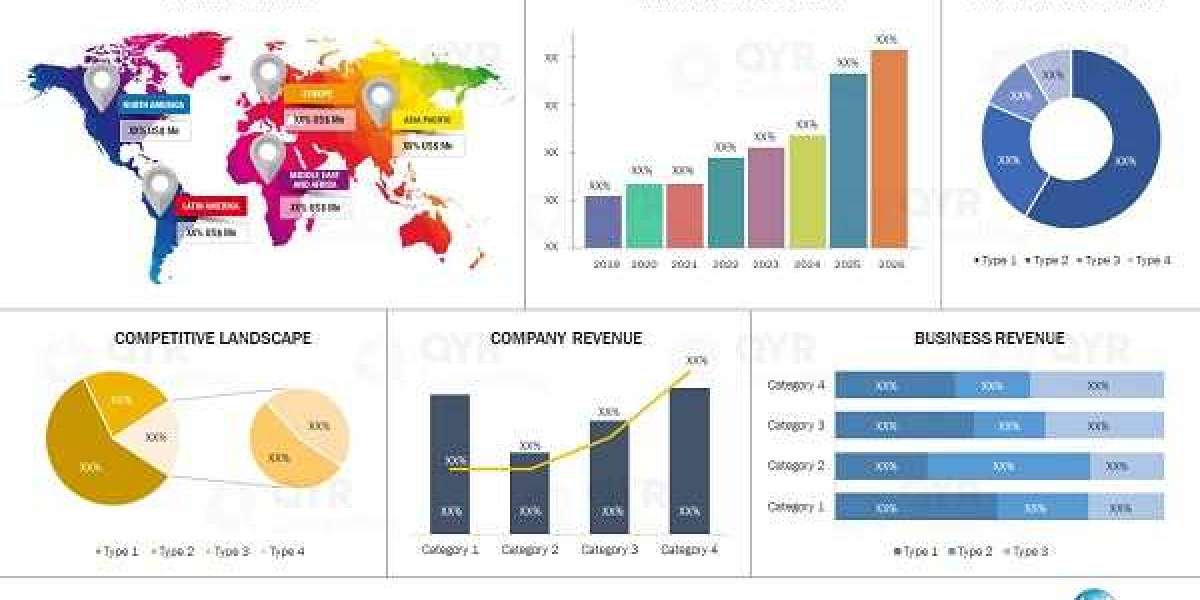The global anti-obesity drugs market was valued at USD 3.2 billion in 2024, driven by the rising prevalence of obesity across major global markets. Obesity has become a significant public health challenge, prompting an increased demand for weight-loss treatments, including prescription drugs. The anti-obesity drugs market is expected to grow at a remarkable compound annual growth rate (CAGR) of 43.72% during the forecast period of 2025-2034, with projections suggesting the market will reach USD 92.3 billion by 2034. This article delves into the market’s growth drivers, trends, and key players shaping its future.
Market Overview
The anti-obesity drugs market refers to the pharmaceutical sector focused on developing drugs to manage and reduce obesity, a growing global health concern. Obesity is a chronic condition that significantly increases the risk of other diseases, such as cardiovascular disease, diabetes, and hypertension. As the prevalence of obesity rises, particularly in developed countries, the demand for effective anti-obesity drugs is surging. These drugs are aimed at either promoting weight loss, reducing appetite, or increasing the body's metabolism to burn fat. The market is poised for growth, driven by innovations in drug formulations, increasing awareness of obesity-related health risks, and evolving treatment guidelines.
Market Size and Share
The anti-obesity drugs market was valued at USD 3.2 billion in 2024 and is expected to grow at a CAGR of 43.72% between 2025 and 2034. This rapid growth is attributed to the rising global prevalence of obesity and related comorbidities, including type 2 diabetes and hypertension. By 2034, the market is projected to reach approximately USD 92.3 billion. The North American region, particularly the United States, is expected to maintain a dominant share, followed by Europe and Japan, as the demand for weight-loss medications increases. As the market grows, the introduction of innovative and more effective drugs will play a pivotal role in market expansion.
Get a free sample request: https://www.expertmarketresearch.com/reports/anti-obesity-drugs-market/requestsample
Market Trends
• Rising Global Obesity Rates
The growing prevalence of obesity worldwide, particularly in North America, Europe, and parts of Asia, is a major driver of the anti-obesity drugs market. With an increasing number of individuals affected by obesity, the demand for pharmaceutical solutions to manage and treat obesity is expected to continue rising. Additionally, the rise of obesity-related health conditions, such as diabetes and cardiovascular disease, has intensified the need for weight-loss treatments.
• Increased Availability of Prescription Medications
In recent years, several new anti-obesity drugs have been approved, and many are now available on the market. Drugs like Semaglutide and Phentermine/Topiramate are gaining traction for their effectiveness in promoting weight loss and their positive impact on patients’ overall health. The increase in available prescription options has made it easier for healthcare providers to tailor treatments to individual patient needs, driving market growth.
• Shift Toward Personalized Medicine
Personalized medicine is becoming increasingly important in the anti-obesity drugs market. With advancements in genomics and molecular biology, drugs are now being developed to target specific genetic factors that contribute to obesity. This allows for more tailored treatments, improving the efficacy and safety of anti-obesity drugs, and fueling market growth. Personalized treatments will help reduce side effects and improve patient outcomes.
• Regulatory Support and Approvals
Government agencies, such as the U.S. Food and Drug Administration (FDA) and the European Medicines Agency (EMA), are continuing to approve new anti-obesity drugs, creating a more favorable regulatory environment. As the demand for effective anti-obesity treatments rises, regulatory bodies are providing more streamlined approval processes for new drugs, facilitating market growth. However, regulatory challenges related to safety and efficacy must be carefully navigated to maintain approval status.
Market Analysis
• Drug Type Breakdown
The anti-obesity drugs market is segmented by drug type, with some of the most widely used medications being Semaglutide, Phentermine/Topiramate, and Naltrexone/Bupropion. Among these, Semaglutide is currently gaining significant attention due to its high effectiveness in promoting weight loss. Additionally, Orlistat, Phentermine, and Tirzepatide are commonly prescribed to patients, depending on their medical history and weight-loss goals.
• Drug Class Breakdown
The anti-obesity drugs market is divided into various drug classes, including Amphetamines, GLP-1 receptor agonists, Lipase inhibitors, and others. GLP-1 receptor agonists, such as Semaglutide and Liraglutide, are becoming increasingly popular due to their ability to improve satiety and reduce food intake. Lipase inhibitors, such as Orlistat, work by blocking fat absorption in the digestive tract, further driving the demand for these drugs.
• Mechanism of Action Breakdown
Anti-obesity drugs are categorized based on their mechanism of action, which includes centrally acting drugs and peripherally acting drugs. Centrally acting drugs, such as Phentermine and Phentermine/Topiramate, work by influencing the brain's hunger signals, reducing appetite. On the other hand, peripherally acting drugs like Orlistat focus on reducing the absorption of dietary fats in the body, offering a different approach to weight management.
• Prescription Type Breakdown
The market is segmented into prescription drugs and over-the-counter (OTC) drugs. Prescription drugs account for a larger share of the market, as they are more potent and regulated to treat severe cases of obesity. OTC drugs, while less potent, are increasingly being used for weight management in individuals who may not require a prescription but still wish to manage their weight through available medications.
Regional Insights
• North America
North America is the largest market for anti-obesity drugs, primarily due to the high prevalence of obesity in the United States. The market here is further fueled by growing awareness of the health risks associated with obesity, such as cardiovascular disease and diabetes. Additionally, the presence of major pharmaceutical companies and regulatory agencies like the FDA supports the growth of the market in this region. With the ongoing demand for effective weight-loss solutions, North America is expected to maintain its dominant position in the anti-obesity drugs market.
• Europe
Europe is also a significant market for anti-obesity drugs, particularly in countries such as Germany, the United Kingdom, and France. The rising obesity rates across Europe, coupled with increasing healthcare awareness, contribute to the demand for anti-obesity medications. Regulatory support from European health authorities has made it easier for companies to introduce new drugs to the market. Additionally, European healthcare systems are increasingly offering obesity treatments as part of public health strategies, further driving the market's growth.
Market Growth
The anti-obesity drugs market is experiencing rapid growth due to several key factors. Rising global obesity rates, increased awareness of the health risks associated with obesity, and the availability of new and effective anti-obesity drugs are driving the market. Additionally, the growing trend of personalized medicine, where treatments are tailored to individual needs, is expected to further fuel market growth. The approval of new drugs and the expansion of distribution channels, including online pharmacies, will also contribute to future market opportunities.
Recent Developments Challenges
• Recent Developments
- Novo Nordisk launched Semaglutide, a GLP-1 receptor agonist, for the treatment of obesity, marking a major breakthrough in weight-loss treatments.
- Eli Lilly introduced Tirzepatide, a novel drug that has shown significant promise in weight management and is expected to impact the market.
- GlaxoSmithKline received approval for a new obesity drug that targets appetite regulation in patients with severe obesity.
- Pfizer announced a collaboration to develop a new class of anti-obesity drugs focused on metabolic pathways.
• Challenges
- The high cost of anti-obesity drugs may limit access for some patient populations.
- Concerns about the long-term safety and side effects of anti-obesity drugs could hinder market growth.
- Regulatory hurdles related to the approval of new drugs can delay their entry into the market.
- The risk of misuse or dependency on certain types of anti-obesity drugs presents an ongoing challenge.
Key Players
• GlaxoSmithKline PLC
GlaxoSmithKline is a leading player in the anti-obesity drugs market, offering innovative medications to manage obesity. The company’s portfolio includes drugs like Orlistat, which is widely prescribed for weight management. GSK continues to invest in research and development to bring new treatments to market, solidifying its position as a key player in the global anti-obesity drug landscape.
• Pfizer Inc.
Pfizer is another major player in the anti-obesity market, known for its focus on obesity-related drugs. The company’s involvement in developing effective weight-loss solutions, such as its collaboration for a new drug class targeting metabolic pathways, positions it as a key player in the market. Pfizer's global reach and significant market presence make it a prominent entity in the fight against obesity.
• Novo Nordisk A/S
Novo Nordisk is at the forefront of anti-obesity drug development, particularly with its GLP-1 receptor agonists like Semaglutide and Liraglutide. These drugs have shown significant success in managing obesity and related comorbidities. Novo Nordisk’s robust pipeline and commitment to tackling obesity-related health issues make it a leader in the field.
• Rhythm Pharmaceuticals
Rhythm Pharmaceuticals is a biotech company specializing in developing treatments for rare genetic disorders of obesity. The company’s innovative approach to treating obesity through targeting specific genetic pathways positions it as an emerging player in the anti-obesity drugs market. Rhythm’s focus on precision medicine is expected to drive future growth in the sector.
Other companies involved in the market include KVK Tech Inc., Currax Pharmaceuticals LLC, Vivus LLC, and Eli Lilly and Company.
FAQs
• What are anti-obesity drugs?
Anti-obesity drugs are medications designed to help individuals reduce body weight by affecting appetite, metabolism, or fat absorption in the body.
• What are the key types of anti-obesity drugs?
The main types include GLP-1 receptor agonists, lipase inhibitors, and amphetamines.
• Which regions dominate the anti-obesity drugs market?
North America and Europe are the dominant regions, with the United States leading in terms of market share.
• What factors are driving the growth of the anti-obesity drugs market?
Rising obesity rates, increased awareness of obesity-related health risks, and innovations in drug development are the primary factors contributing to market growth.
More Related Report: https://www.expertmarketresearch.com/healthcare-articles/top-pediatric-medical-device-companies-worldwide











